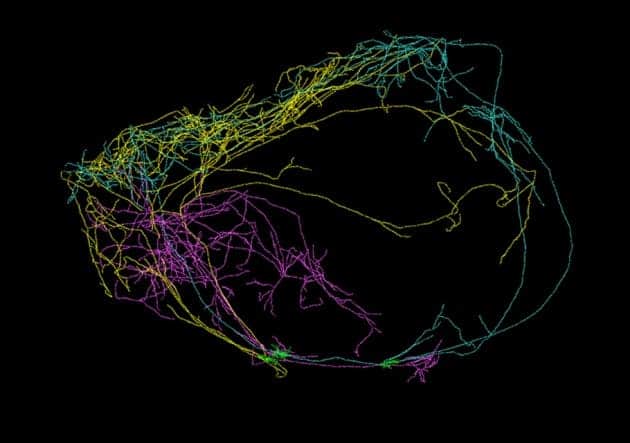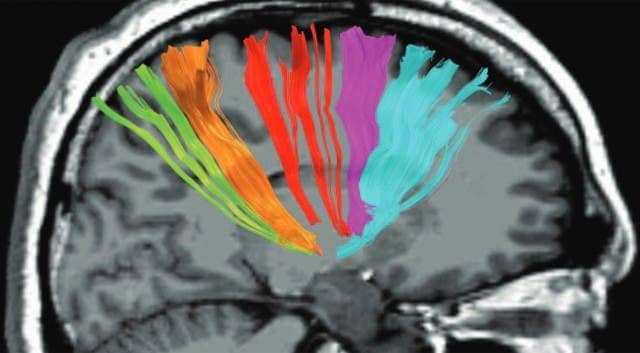Using a novel imaging technique, neuroscientists showed how a couple of neurons inside the mouse brain branched out and extended around the organ like a crown of thorns. One such neuron, which originates from a cluster of cells called the claustrum and which is thought to act as the seat of consciousness, extended across the whole circumference of the brain. Nothing like it has ever been observed and the team involved in the research thinks this is circumstantial evidence that might confirm the claustrum as the pinnacle of consciousness.
The hidden seat of consciousness
Brain research has always been interested in the claustrum, a thin sheet of neurons attached to the underside of the neocortex in the center of the brain. This small neural structure, whose name means ‘hidden away’, is interesting for several reasons.
For one, it has a remarkable anatomy in that it receives input from almost all regions of cortex and projects back to almost all regions of cortex. For this reason, some scientists speculate that the claustrum is heavily involved in generating consciousness which is a ‘unified’ experience. Secondly, the claustrum is tiny, occupying only 0.25 percent of the neocortex’s volume in humans, and only consists of a few cell types, which makes it easier to study it.
Christof Koch, president of the Allen Institute for Brain Science in Seattle, Washington, led a new research which probed individual neurons inside the claustrum in unprecedented detail. The researchers’ work confirms the claustrum is likely the most well-connected part of the brain with other regions.
Central to the researchers’ work is a novel imaging technique. Typically, to image individual neurons you have to inject cells with a special dye to make them stand out, then slice the brain into very thin sections. It’s then a matter of tediously tracing the neurons’ paths by hand. As such, there are only a handful of studies which were able to trace neuron through the entire organ.
The giants
The method developed by Koch and colleagues is far less invasive and saves time. They first engineered mice so that when they came in contact with a drug, specific genes activated to produce green fluorescent proteins in the claustrum. The fluorescent proteins spread through the entire length of the neuron, which proved very handy. Some 10,000 cross-sectional images of the mouse brain were taken then a computer algorithm stitched all of these together to make a 3D reconstruction.
Only three neurons lit up but these more than made up for it in sheer length. All three stretched across both brain hemispheres and one neuron was so long it wrapped around the entire brain’s circumference. Very long neurons can be found in places such as the leg or in the brainstem but nothing as extensive as claustrum neurons was observed until now.
According to Koch, the findings add weight to the idea that the claustrum coordinates inputs and outputs in the brain to give rise to what we familiarly call consciousness but know so little about.
In 2015, a group from George Washington University found the claustrum can act like an ‘on-off switch’ for consciousness. They cite the case of a woman suffering from epilepsy which slipped into a near-catatonic state when the claustrum was stimulated via electrodes. Another study published in Consciousness and Cognition studied combat veterans with deep traumatic brain injuries affecting the claustrum. This time their results varied quite widely because many of the veterans had injuries in addition to their claustrum damage. These patients had an increase in the duration — and not frequency — of mental blackouts. This suggests the claustrum is involved both in ending and regaining active consciousness. Previous studies have also linked the claustrum with certain forms of coma and certain forms of dissociation.
Even if this ‘crown of thorns’ imaged by Koch’s team doesn’t prove directly that the claustrum is involved in generating or maintaining consciousness, the technique they developed will be extremely useful in the future. Speaking to Nature, Koch said he and colleagues will continue to explore neurons from the claustrum this time hoping to image more. If more neurons turn out to be this big, he might be on to something. So far, the claustrum seems the likeliest candidate for our consciousness’ biological origin.











